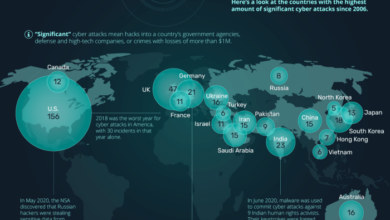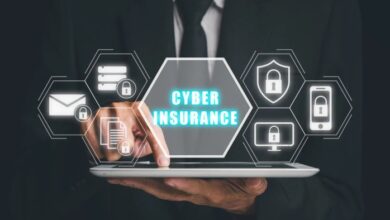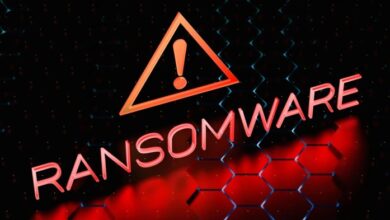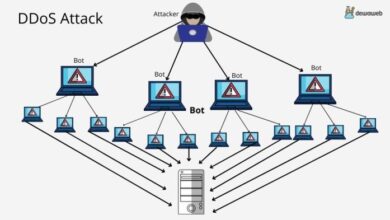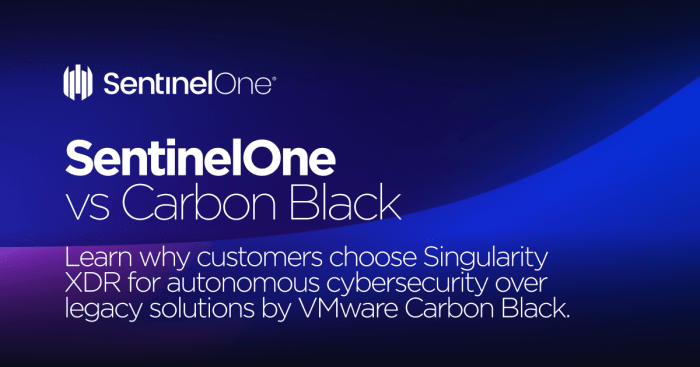
SentinelOne vs Carbon Black: Endpoint Security Showdown
SentinelOne vs Carbon Black: the ultimate endpoint security showdown. In today’s digital landscape, where cyber threats are constantly evolving, safeguarding your organization’s endpoints is more crucial than ever. SentinelOne and Carbon Black, two leading players in the endpoint security market, offer robust solutions to combat these threats.
This blog post delves into a comprehensive comparison of these two platforms, exploring their key features, capabilities, and strengths. We’ll examine their approaches to threat detection and response, endpoint protection, integration, and scalability. Ultimately, this comparison aims to provide you with the insights you need to make an informed decision about which endpoint security solution is best for your organization.
Whether you’re a seasoned cybersecurity professional or just starting to explore endpoint security, understanding the nuances of these solutions is essential. We’ll dive into their respective strengths, weaknesses, and pricing models, shedding light on their suitability for different organizational needs.
Join us as we unravel the complexities of SentinelOne and Carbon Black, empowering you to make the right choice for your cybersecurity strategy.
Endpoint Security: SentinelOne vs Carbon Black
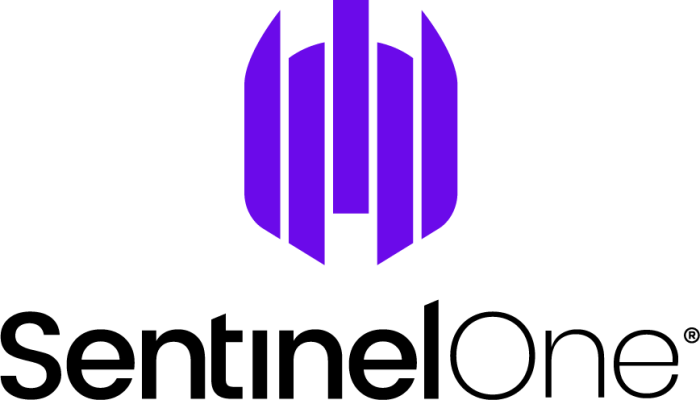
In today’s rapidly evolving threat landscape, endpoint security is paramount for organizations of all sizes. Endpoint security solutions protect devices, such as laptops, desktops, and mobile devices, from malicious attacks and data breaches. SentinelOne and Carbon Black are two prominent players in this space, each offering a comprehensive suite of features to safeguard endpoints.
Overview of SentinelOne and Carbon Black
SentinelOne and Carbon Black are both leading endpoint security solutions that provide robust protection against advanced threats. They share many similarities, such as real-time threat detection and response, advanced threat intelligence, and comprehensive endpoint visibility. However, they also have distinct strengths and weaknesses that set them apart.
Key Features and Capabilities
To understand the differences between SentinelOne and Carbon Black, it’s essential to examine their key features and capabilities. Here’s a comparison of some critical aspects:
- Threat Detection and Response:Both SentinelOne and Carbon Black employ sophisticated techniques to detect and respond to threats in real-time. SentinelOne utilizes a unique approach called “ActiveEDR,” which leverages machine learning and behavioral analysis to identify suspicious activities and automatically respond with containment, remediation, and rollback actions.
Carbon Black, on the other hand, relies on a combination of signature-based detection, behavioral analysis, and threat intelligence to identify threats.
- Endpoint Visibility and Control:Both solutions provide extensive visibility into endpoint activities, allowing security teams to monitor user behavior, software installations, and network connections. SentinelOne offers a comprehensive endpoint visibility platform that provides a unified view of all endpoint activities, including user actions, application behavior, and network traffic.
Carbon Black’s endpoint visibility capabilities are also robust, providing insights into endpoint processes, files, and network connections.
- Threat Intelligence and Prevention:Both SentinelOne and Carbon Black leverage threat intelligence to enhance their protection capabilities. SentinelOne integrates with various threat intelligence feeds and uses machine learning to identify and block known and unknown threats. Carbon Black also relies on threat intelligence to detect and prevent attacks, including those from advanced threat actors.
Choosing between SentinelOne and Carbon Black for endpoint protection can be a tough decision. Both offer robust features, but ultimately the best choice depends on your specific needs and budget. While I’m busy weighing those options, I’m also keeping an eye on the news about a more affordable iPad Magic Keyboard in the works.
I’m hoping it’ll make working on the go even smoother, especially when I’m researching the latest in endpoint security solutions.
- Vulnerability Management:Both solutions include vulnerability management capabilities to identify and remediate vulnerabilities on endpoints. SentinelOne offers a comprehensive vulnerability management platform that scans endpoints for known vulnerabilities and provides remediation guidance. Carbon Black’s vulnerability management capabilities focus on identifying and prioritizing vulnerabilities based on their severity and exploitability.
Key Features and Capabilities
Both SentinelOne and Carbon Black are leading players in the endpoint security market, offering comprehensive solutions to protect organizations from cyber threats. Each platform brings its own set of features and capabilities, catering to different security needs and priorities.
SentinelOne
SentinelOne’s core strength lies in its AI-powered threat detection and response capabilities. It leverages machine learning and behavioral analysis to identify and neutralize threats in real time, significantly reducing the time to detect and respond to attacks.
Endpoint Protection
SentinelOne provides robust endpoint protection against a wide range of threats, including malware, ransomware, and exploits. Its features include:
- Real-time threat detection and prevention:SentinelOne’s AI engine continuously monitors endpoint activity and proactively blocks suspicious behavior, preventing threats from gaining a foothold.
- Advanced malware analysis:It analyzes suspicious files and processes to identify and neutralize advanced threats, including zero-day attacks.
- Vulnerability assessment and remediation:SentinelOne scans for vulnerabilities and automatically patches them, minimizing the attack surface.
Threat Hunting and Incident Response
SentinelOne’s threat hunting and incident response capabilities empower security teams to proactively identify and respond to threats. Its features include:
- Threat intelligence integration:SentinelOne integrates with threat intelligence feeds, enabling it to identify and respond to known and emerging threats.
- Automated incident response:It automates incident response workflows, allowing security teams to quickly contain and remediate threats.
- Forensic analysis:SentinelOne provides detailed forensic data to help security teams investigate and understand attacks.
Integration with Other Security Tools
SentinelOne seamlessly integrates with other security tools, including SIEMs, SOAR platforms, and cloud security solutions. This integration enables organizations to build a comprehensive security posture and share threat information across different security layers.
Carbon Black
Carbon Black’s endpoint detection and response (EDR) platform offers a comprehensive approach to endpoint security, focusing on threat prevention, investigation, and remediation.
Endpoint Detection and Response (EDR)
Carbon Black’s EDR platform provides real-time visibility into endpoint activity, enabling security teams to detect and respond to threats quickly. Its features include:
- Threat prevention:Carbon Black uses a combination of signature-based and behavioral analysis techniques to prevent known and unknown threats from executing on endpoints.
- Threat detection:Its EDR platform continuously monitors endpoint activity and alerts security teams to suspicious behavior, including malware infections, file modifications, and network connections.
- Incident response:Carbon Black provides tools to investigate and remediate threats, including isolating infected endpoints, removing malware, and restoring compromised systems.
Threat Intelligence
Carbon Black leverages its extensive threat intelligence to provide insights into emerging threats and improve its detection and response capabilities. Its features include:
- Threat intelligence feeds:Carbon Black integrates with threat intelligence feeds to stay ahead of emerging threats and proactively protect endpoints.
- Threat hunting:Carbon Black’s threat hunting capabilities enable security teams to proactively search for and identify threats that may have evaded traditional security controls.
- Threat analysis:Carbon Black provides detailed threat analysis reports to help security teams understand the nature and impact of threats.
Product Comparison
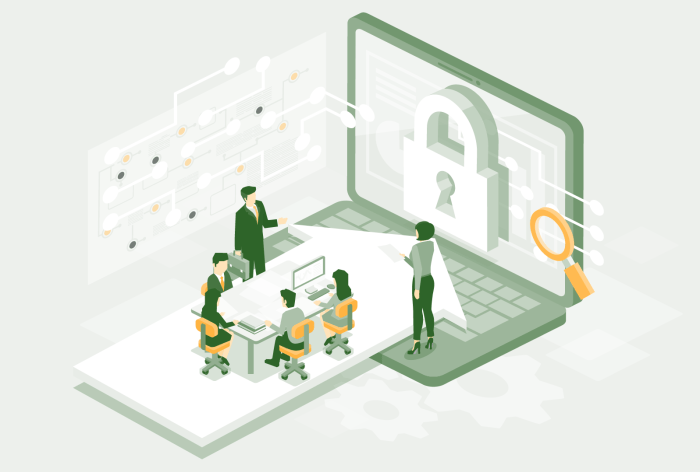
This section delves into a detailed comparison of SentinelOne and Carbon Black, focusing on their key capabilities in threat detection and response, endpoint protection, and integration and management.
Threat Detection and Response
The effectiveness of SentinelOne and Carbon Black in detecting and responding to advanced threats is a crucial factor for organizations. Both solutions leverage advanced technologies, including AI and machine learning, to identify and neutralize threats.SentinelOne’s platform boasts a comprehensive approach to threat detection and response.
Its AI-powered engine, called Behavioral AI, analyzes endpoint activity in real-time to identify suspicious patterns and detect zero-day threats. This proactive approach helps prevent attacks before they can cause significant damage.Carbon Black, on the other hand, relies on a combination of endpoint security and threat intelligence to identify and respond to threats.
Its endpoint protection platform provides real-time visibility into endpoint activity, enabling security teams to investigate and respond to incidents quickly. Carbon Black also leverages its global threat intelligence network to identify known threats and proactively protect against them.
- SentinelOne’s Behavioral AI engine excels at detecting zero-day threats by analyzing endpoint activity in real-time. It identifies suspicious patterns and anomalies, even in the absence of known signatures, enabling rapid response to emerging threats.
- Carbon Black’s threat intelligence network provides valuable insights into known threats, enabling proactive protection against known malware and exploits. This intelligence network is continuously updated with information from various sources, ensuring that Carbon Black’s defenses remain effective against evolving threats.
Endpoint Protection
Endpoint protection is a critical aspect of any comprehensive security strategy. SentinelOne and Carbon Black offer robust endpoint protection capabilities, designed to prevent unauthorized access, data breaches, and ransomware attacks.SentinelOne’s platform provides a comprehensive suite of endpoint protection features, including real-time threat prevention, endpoint detection and response (EDR), and ransomware protection.
Its advanced protection capabilities extend beyond traditional antivirus solutions, offering a more proactive approach to security.Carbon Black’s endpoint protection platform focuses on providing real-time visibility into endpoint activity, enabling security teams to detect and respond to threats quickly. Its platform also offers robust malware protection, including anti-malware, anti-exploit, and anti-ransomware capabilities.
- SentinelOne’s proactive approach to endpoint protection, including real-time threat prevention and ransomware protection, provides a robust defense against emerging threats. Its EDR capabilities enable rapid incident response, minimizing the impact of attacks.
- Carbon Black’s real-time visibility into endpoint activity, combined with its robust malware protection features, provides a strong defense against known and unknown threats. Its platform’s ability to quickly detect and respond to incidents is a significant advantage.
Integration and Management
Ease of integration and management is essential for any security solution, ensuring seamless deployment and efficient operations. Both SentinelOne and Carbon Black offer user-friendly interfaces and flexible integration capabilities.SentinelOne’s platform is designed for ease of use and seamless integration with existing security infrastructure.
Its cloud-based architecture simplifies deployment and management, eliminating the need for complex on-premises infrastructure.Carbon Black’s platform is also known for its user-friendly interface and flexible integration options. Its platform can be deployed on-premises or in the cloud, offering flexibility to organizations with different infrastructure needs.
Choosing between SentinelOne and Carbon Black for your endpoint security can be a tough call, but just like deciding whether to upgrade your Apple TV to avoid missing out on the next binge-worthy show on Netflix, you’ll want to make sure your security solution is future-proof.
Both SentinelOne and Carbon Black offer robust protection, but it’s important to weigh factors like ease of deployment, management, and integration with your existing infrastructure to make the right choice for your organization.
- SentinelOne’s cloud-based architecture simplifies deployment and management, reducing the need for complex on-premises infrastructure. Its user-friendly interface and intuitive dashboard make it easy for security teams to manage and monitor endpoints.
- Carbon Black’s platform offers flexibility in deployment, allowing organizations to choose between on-premises and cloud-based solutions. Its user-friendly interface and comprehensive reporting capabilities facilitate efficient management and analysis of security data.
Deployment and Scalability
Both SentinelOne and Carbon Black offer robust endpoint security solutions designed to protect organizations of all sizes. However, their deployment options and scalability capabilities differ significantly, impacting their suitability for various environments. This section delves into their deployment methods, cloud-based and on-premises capabilities, and scalability performance, highlighting their strengths and weaknesses.
Deployment Options
Deployment options significantly impact how easily an endpoint security solution can be integrated into an organization’s existing infrastructure.
- SentinelOneoffers a flexible deployment model that caters to various organizational needs. Its agent-based approach allows for both cloud-based and on-premises deployment. Cloud-based deployment is ideal for organizations seeking a fast and efficient setup, while on-premises deployment provides greater control and customization.
- Carbon Black, on the other hand, primarily focuses on on-premises deployments. While it offers a cloud-based option through its Carbon Black Cloud platform, it primarily targets organizations with existing on-premises infrastructure. This approach requires more time and resources for installation and configuration compared to cloud-based solutions.
The choice between cloud-based and on-premises deployment depends on factors such as organizational size, existing infrastructure, and security requirements. Cloud-based deployments are generally more suitable for smaller organizations with limited IT resources, while on-premises deployments offer greater control and customization for larger organizations with established IT infrastructure.
Scalability and Performance
The ability to scale and maintain performance under high-volume attacks is crucial for endpoint security solutions.
- SentinelOneis designed for scalability, handling large numbers of endpoints with minimal performance impact. Its lightweight agent and cloud-based architecture allow it to efficiently manage and protect endpoints across distributed networks. SentinelOne’s scalability is particularly beneficial for organizations with rapidly expanding endpoint environments.
- Carbon Blackalso offers good scalability but may face performance challenges when managing a large number of endpoints. Its agent, while efficient, can consume more system resources compared to SentinelOne’s agent, potentially impacting system performance. Carbon Black’s on-premises deployment model may also require additional infrastructure investment to handle large-scale deployments.
Organizations with a large number of endpoints or facing high-volume attacks should prioritize solutions with proven scalability and minimal performance impact. SentinelOne’s cloud-based architecture and lightweight agent make it a suitable choice for such scenarios.
Pricing and Licensing
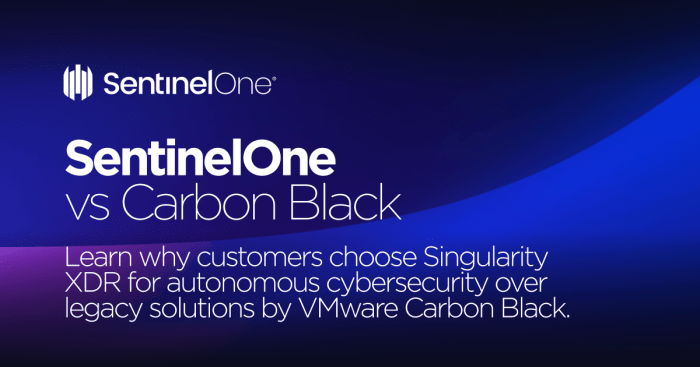
Understanding the pricing and licensing models of SentinelOne and Carbon Black is crucial for organizations seeking to implement an endpoint security solution. These factors can significantly impact the overall cost and return on investment. This section delves into the pricing structures, subscription options, and licensing models of both solutions, providing a comparative analysis to aid in informed decision-making.
Pricing Models
Both SentinelOne and Carbon Black offer subscription-based pricing models, which typically include a per-endpoint fee. These models are designed to provide flexibility and scalability, allowing organizations to pay for the level of protection they require. The pricing models for SentinelOne and Carbon Black are as follows:
- SentinelOne offers a tiered pricing structure based on the features and functionalities included. The pricing tiers typically include a base level, which offers essential endpoint protection features, and premium tiers that provide additional capabilities like threat hunting, incident response, and advanced threat intelligence.
The pricing for each tier is based on the number of endpoints protected.
- Carbon Black, similarly, employs a tiered pricing structure, with different levels of protection and features. The pricing is based on the number of endpoints and the chosen protection level. Carbon Black’s pricing tiers generally include a basic level for endpoint protection and higher tiers for more comprehensive security features like threat intelligence, incident response, and vulnerability management.
Licensing and Support
Licensing and support options are critical considerations for any security solution. The licensing model should align with an organization’s specific needs and budget, while support options should provide timely and effective assistance when required.
Choosing between SentinelOne and Carbon Black is a tough decision, both offering robust endpoint protection. However, when considering the broader security landscape, it’s worth exploring the Microsoft Security Copilot Experience Center. This platform integrates AI-powered threat hunting and incident response, potentially offering a more comprehensive solution that complements either SentinelOne or Carbon Black’s strengths.
- SentinelOne offers various licensing options, including annual subscriptions and multi-year contracts. The licensing model is typically based on the number of endpoints protected. SentinelOne also provides different levels of support, including basic, premium, and enterprise support. The level of support determines the response time, access to dedicated support personnel, and other benefits.
- Carbon Black’s licensing options are similar to SentinelOne, with annual subscriptions and multi-year contracts available. Carbon Black also offers different levels of support, ranging from basic to enterprise support, with varying levels of response time, access to dedicated support personnel, and other benefits.
| Feature | SentinelOne | Carbon Black |
|---|---|---|
| Pricing Model | Subscription-based, tiered pricing structure | Subscription-based, tiered pricing structure |
| Licensing Options | Annual subscriptions, multi-year contracts | Annual subscriptions, multi-year contracts |
| Support Options | Basic, premium, enterprise support | Basic, premium, enterprise support |
| Customer Support Channels | Phone, email, online portal | Phone, email, online portal |
Both SentinelOne and Carbon Black offer comprehensive documentation and training resources to assist customers in effectively deploying and managing their solutions.
Use Cases and Success Stories: Sentinelone Vs Carbon Black
Both SentinelOne and Carbon Black have a strong track record of success in various industries, showcasing their effectiveness in addressing diverse security challenges. Their robust features and capabilities have earned them recognition and trust from leading organizations worldwide.
Real-World Examples
SentinelOne and Carbon Black have been deployed successfully in various industries, including financial services, healthcare, manufacturing, and government. Their ability to address specific security challenges, such as ransomware attacks, advanced persistent threats (APTs), and insider threats, has made them popular choices for organizations seeking comprehensive endpoint security solutions.
Financial Services
- A major financial institution implemented SentinelOne to protect its critical infrastructure from ransomware attacks. SentinelOne’s AI-powered threat detection and response capabilities enabled the institution to identify and neutralize threats quickly and effectively, minimizing downtime and financial losses.
- Carbon Black’s endpoint protection platform helped a global investment bank prevent a data breach by detecting and blocking malicious activity originating from a compromised employee’s laptop. The bank’s security team was able to isolate the infected device and prevent the spread of malware to other systems.
Healthcare
- A healthcare provider used SentinelOne to secure its patient data from cyberattacks. SentinelOne’s real-time threat detection and response capabilities helped the provider identify and isolate infected devices, preventing the theft of sensitive patient information.
- Carbon Black’s endpoint security solution helped a hospital chain mitigate the impact of a ransomware attack. Carbon Black’s endpoint protection platform enabled the hospital to quickly identify and contain the malware, minimizing disruption to patient care and reducing the financial impact of the attack.
Manufacturing
- A manufacturing company deployed SentinelOne to protect its industrial control systems (ICS) from cyberattacks. SentinelOne’s ability to detect and respond to threats in real-time helped the company prevent disruptions to its production processes and ensure the safety of its employees.
- Carbon Black’s endpoint protection platform helped a multinational manufacturing company improve its security posture by providing visibility into its entire endpoint environment. Carbon Black’s comprehensive threat intelligence and reporting capabilities enabled the company to identify and address potential security vulnerabilities before they could be exploited.
Government
- A government agency implemented SentinelOne to protect its critical infrastructure from cyberattacks. SentinelOne’s advanced threat detection and response capabilities helped the agency identify and neutralize threats quickly and effectively, ensuring the security of its operations.
- Carbon Black’s endpoint security solution helped a state government agency improve its compliance with regulatory requirements. Carbon Black’s comprehensive threat intelligence and reporting capabilities enabled the agency to demonstrate its compliance with industry standards and regulations.
Industry Recognition
Both SentinelOne and Carbon Black have received numerous industry awards and recognitions for their innovative endpoint security solutions. Their reputation in the endpoint security market is strong, and they are consistently ranked among the top vendors in the industry.
SentinelOne
- SentinelOne has been recognized by Gartner as a Leader in the Endpoint Protection Platforms (EPP) Magic Quadrant for four consecutive years. The company has also received numerous awards from industry publications, including SC Magazine, Cyber Defense Magazine, and InfoSecurity Products Guide.
Carbon Black
- Carbon Black has been recognized by Gartner as a Leader in the Endpoint Protection Platforms (EPP) Magic Quadrant for several years. The company has also received numerous awards from industry publications, including SC Magazine, Cyber Defense Magazine, and InfoSecurity Products Guide.
Conclusion
This comprehensive comparison of SentinelOne and Carbon Black has highlighted the strengths and weaknesses of both solutions. While both are robust endpoint security platforms, they cater to different needs and priorities.
Summary, Sentinelone vs carbon black
SentinelOne stands out with its cloud-native architecture, AI-powered threat detection, and comprehensive endpoint protection capabilities. It excels in managing a large number of endpoints, offering a unified console for visibility and control. However, its pricing can be more expensive than Carbon Black, and some users may find the interface less intuitive.Carbon Black, on the other hand, offers a more traditional approach to endpoint security, with strong endpoint detection and response (EDR) capabilities.
It is known for its ease of use and integration with existing security tools. However, its reliance on agents for endpoint protection can be less efficient than SentinelOne’s agentless approach, and its threat intelligence may be less advanced.
Recommendations
The choice between SentinelOne and Carbon Black ultimately depends on the specific needs and priorities of your organization.
- Organizations with a large number of endpoints and a strong emphasis on automation and AI-driven threat detection may find SentinelOne to be a better fit. Its cloud-native architecture and advanced threat intelligence capabilities can significantly streamline security operations.
- Organizations with a smaller footprint and a preference for a more traditional approach to endpoint security may find Carbon Black to be a more suitable choice. Its user-friendly interface and strong EDR capabilities make it a reliable option for organizations that need a straightforward and effective solution.
When choosing an endpoint security solution, organizations should consider the following factors:
- Endpoint count:Organizations with a large number of endpoints may benefit from SentinelOne’s cloud-native architecture and scalability.
- Budget:SentinelOne’s pricing can be more expensive than Carbon Black, so organizations need to consider their budget constraints.
- Security requirements:Organizations with strict security requirements may find SentinelOne’s AI-powered threat detection and comprehensive endpoint protection capabilities to be more advantageous.
- Ease of use:Organizations with limited security expertise may prefer Carbon Black’s user-friendly interface and integration with existing security tools.
- Threat intelligence:Organizations with a high risk of cyberattacks may find SentinelOne’s advanced threat intelligence capabilities to be more valuable.


